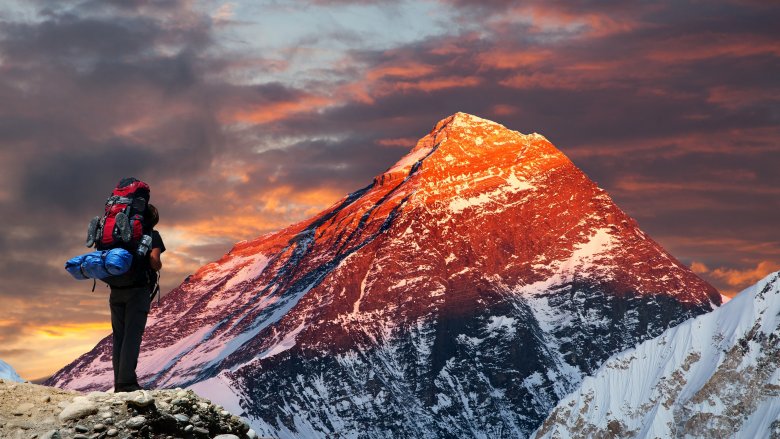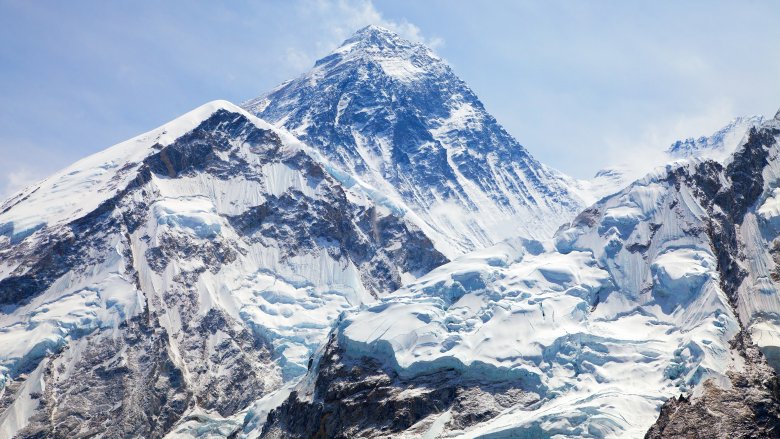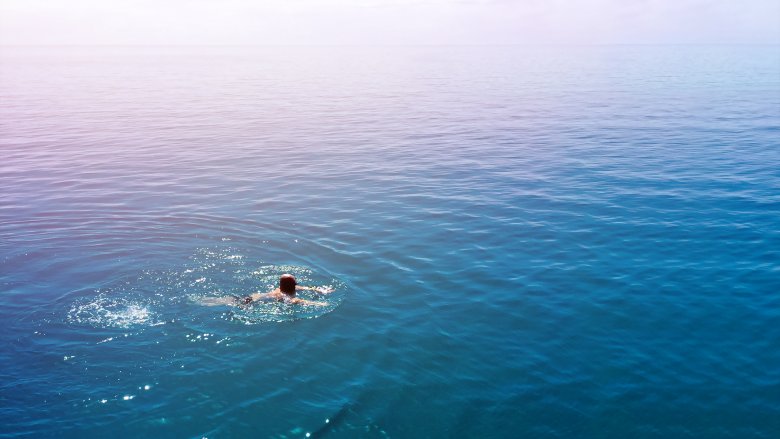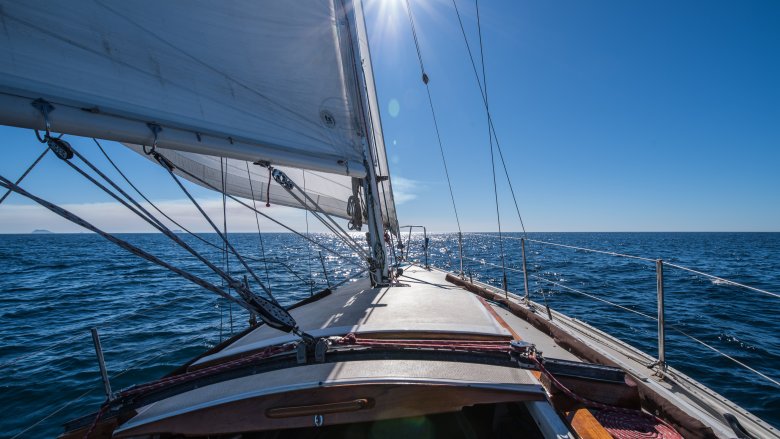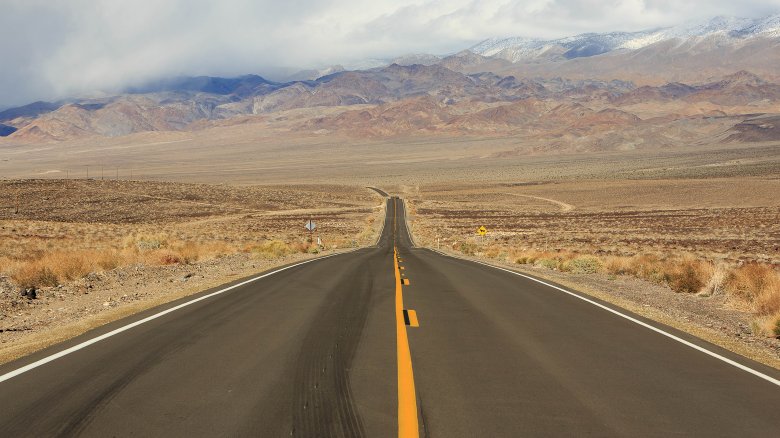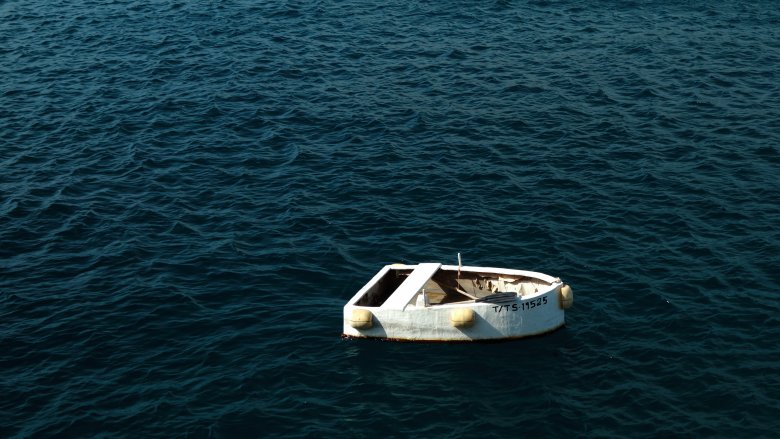Record-Breaking Physical Feats That Blew Everyone Away
Let's face it: humans are weird. We're awesome, idiotic, adventurous creatures, always pushing ourselves to the very limit to achieve things never before thought possible. Everyone loves a hero, and real-life heroes are even better than fictional ones. These record-breaking physical feats could rival even Captain America's death-defying stunts, so forget the spandex-clad champions leaping around on the silver screen — these folks are the real heroes. Superman who?
Dancing queen: The longest dance marathon
If you watched Gilmore Girls or if you've checked out the University of South Carolina's film archive, you might already know that back in the Depression era, dance marathons became a staple of the social scene in the U.S. People, often the very poor, would dance for hours on end at these popular events, competing to win the grand cash prize simply by being the last one standing — literally, as failing contestants tended faint and some even suffered heart attacks. They got tiny nap breaks and a steady meal for as long as they competed. At least they were dancing themselves into oblivion on full stomachs.
But marathon dancing isn't all desperate times and desperate dances. In the decades since the Depression, many have competed for the record for the longest solo dance time. The current world record holder is Kalamandalam Hemaletha, a classical dancer from India, and in 2011 she set out to make history.
Hemaletha studied dance from a young age, but she needed something a little extra if she was going to beat the world record and dance for over a hundred hours, so she trained rigorously for months beforehand. Despite suffering exhaustion, Hemaletha set a new record by dancing the Mohiniyattam for an astounding 123 hours. In a later interview with CBS, Hemaletha explained that she wanted to earn the traditional Indian dance "its rightful place" in the record books.
The first and only blind person to climb Mount Everest
Is there any greater symbol of endurance than Mount Everest? Since it was named the world's highest mountain in 1856, thousands have toiled to conquer the ice-clad slopes, and plenty have died before reaching the peak. This is a mission that requires sharp wits and good health — which makes Erik Weihenmayer's story even more inspiring.
At 13 years old, Weihenmayer lost his sight to retinoschisis, a degenerative condition of the eyes. Determined not to let his blindness "sweep him to the sidelines of life," Weihenmayer vowed to surmount the world's highest heights. As recorded by Guinness World Records, in 2001 he became the first blind person to climb Mount Everest. To this day, he's the only blind person to do so. The climb tested Weihenmayer to his limits, from the long trek over the dangerous Khumbu icefall to battling stiff winds as he neared the peak.
It took Weihenmayer two months to climb Everest ... but he didn't stop there. The blind mountaineer had already triumphed over the highest mountain in the USA (Denali), and after climbing five more peaks Weihenmayer completed the "Seven Summits" challenge, having traversed the highest point on each continent — you can read about Weihenmayer's quest on his blog. The next time you feel like getting out of bed is too much trouble, think of Weihenmayer's amazing achievements. (Then roll over and go back to sleep because your bed is much warmer than a frozen mountaintop.)
65-year-old man breaks record for longest swim
In 2006, Veljko Rogošić achieved his life's ambition: He broke the record for the world's longest swim. According to Guinness World Records, the Croatian man started at Grado, Italy, and swam up the coast to Riccione wearing nothing but swimming trunks and his trusty pair of goggles. This 139-mile trip was no mean feat, but what made it all the more spectacular was the fact that Rogošić was 65 years old at the time. His journey completed in 50 hours, Rogošić astonished onlookers and the international press — but this was just another day for the energetic pensioner.
Rogošić's career as a competitive swimmer began in his youth, and according to Open Water Swimming, the aquatic athlete competed in 142 national championships and over 200 international competitions — including two Olympic Games — winning many awards for Croatia. Not content with mere prizes, however, Rogošić set a whopping 51 swimming records in his home country. Unfortunately, Rogošić passed away in 2012, but with his world record not beaten yet, his legacy continues.
Falling from the edge of space
Some of us would be satisfied with being the senior VP for one of the world's most powerful companies, but not Alan Eustace. For Google's vice president, the sky was literally the limit, so in 2014 he set out to break the world record for the highest free-fall jump. Working in secret, Eustace and his team designed a balloon that would lift him to the stratosphere, allowing him to ascend 1,600 feet per minute. The modest computer scientist has a reputation as a thrill-seeker, and he trained for months to endure the G-force that would be inflicted on him. When he did, his jump from the edge of space surprised and amazed the world.
Upon reaching his goal altitude of 135,890 feet (more than 25 miles), Eustace untethered himself from the balloon with a small explosive device and plummeted back down to Earth at incredible speeds. The dive only took 15 minutes, and the 57-year-old man even broke 822 mph, passing the sound barrier (at 767 mph) and creating a sonic boom that was heard by his team on the ground. Speaking to the New York Times after the jump, Eustace waxed lyrical about seeing the "darkness of space and layers of atmosphere," describing his incredible fall as "a wild, wild ride."
Sailing around the world in 42 days
The around-the-world sailing record is hotly contested, with the title of fastest circumnavigator changing hands every few years. Amusingly, the last ten years have seen French and British sailors fiercely competing for fastest solo circumnavigation, with Englishwoman Ellen MacArthur and Frenchman Francis Joyon repeatedly taking it from each other between 2005 and 2008, and the French sailor Thomas Coville winning the record back for France in 2016. But in December 2017, François Gabart (no prizes for guessing which nation he hails from) completed his own sailing mission, beating the previous record by six days.
Sailing alone is an incredible feat of endurance, which is why only four people have managed to break this record. As he told NPR, Gabart survived on very little sleep during his voyage, braving extreme temperatures and terrible storms, and traveling at an average of 27.2 knots (31.3 mph). Too exhausted to make the calculations himself, when Gabart crossed the imaginary finish line he tweeted his arrival time, asking his followers to work out whether he broke the record. Spoiler alert: He did.
11 days without sleep
In 1965, Randy Gardner conducted a personal experiment, vowing to stay awake as long as possible. In the era of acid tests and free love, Gardner's drug of choice seemed mundane. But surprisingly, his sleep-deprived trip was no less psychedelic, and far more dangerous, than dropping a tab.
At first everything seemed fine. Gardner felt sluggish as exhaustion set in, and he was already suffering nausea and reduced cognitive function. As recorded by the Psychiatric Times, Gardner veered from mood swings to vivid hallucinations. By the fourth day he was mistaking street signs for people and insisting that he was in fact a famous African-American football player. As ScienceAlert notes, although he beat one of his doctors at pinball on the tenth day, confusion and paranoia set in, and on the 11th day Gardner became almost unresponsive, unable to remember what he was doing or why.
Having beaten the world record, Gardner was rushed to the hospital and caught up on some much-needed sleep. But unfortunately, the story doesn't end there. In December 2017, a 71-year-old Gardner spoke to NPR about the long-term effects of his teenage study. He reports that he now suffers from extreme insomnia, and even after strict sleep training he can only sleep six hours a night. At least he still has his world record title — Guinness World Records has banned sleep deprivation contests for being too dangerous. Of course, that's not much consolation for the man who can't sleep.
Run, Rob, Run: The real-life Forrest Gump
Rob just felt like running. Ever since September 2017, British veterinarian Rob Pope has been running across the USA to raise money for his favorite charities. Clad in a blue-checked shirt and red baseball cap, it's obvious to any Tom Hanks fans exactly who inspired Pope to undertake his philanthropic expedition, and the distance-runner confirmed as much to BBC Three. He hopes that his personal marathon "brings a bit of sunshine to people's lives," and he even chose his charitable causes (humanitarianism and environmentalism) from a line in Forrest Gump: "Reporters asked Forrest whether he was running for women's rights, world peace, the homeless, animals or the environment. So through two charities, I'm covering all five bases," he said.
Pope has run over 13,000 miles, documenting his journey on his blog and social media accounts. Although he does pause to sleep, eat, and regain strength, Pope's personal marathon is by far the longest ever undertaken, and he's the first person to run across the USA three times in one year. In case you were wondering, Pope is still running as of this writing (February 2018) and doesn't intend to stop anytime soon.
Over 400 days lost at sea
The sea is a strange and dangerous place. Though humanity has spread across the Earth, even setting foot on the Moon and sending robots to Mars, we know very little about the oceans that cover 70 percent of our home planet. Getting lost on the vast expanse of water is a terrifying thought — but for Jose Salvador Alvarenga, this was his reality for 438 days.
In January 2014, Alvarenga washed up on the Marshall Islands, setting a world record for the longest anyone has survived being lost at sea. A simple fishing trip had turned into a waking nightmare when Alvarenga's boat got caught in a storm, blowing him off course, destroying the radio, and washing away all his supplies. During his time as a castaway, the El Salvadoran fisherman survived by drinking turtle blood and rainwater, and eating whatever fish or birds he could catch.
Alvarenga was initially accompanied by novice fisherman Ezequiel Cordoba, but even this silver lining turned to torment when the 22-year-old grew ill from eating a bird that had been poisoned by a sea snake. Shaken by the sickness, Cordoba refused to eat the few creatures Alvarenga caught, and soon died. Speaking to Telegraph a year after he returned to dry land, Alvarenga described how he "befriended" Cordoba's corpse and found it difficult to throw him overboard. Alvarenga was later sued by the Cordoba family for allegedly eating Cordoba, although he denied it.
God's gift to power-lifting
When you've got the power of Christ on your side, there's nothing you can't do. Or at least, that's the case for Kevin Fast: The Canadian reverend has broken dozens of world records in his time as a strongman. According to Northumberland News, Fast wowed the world in 2009 when he set the record for pulling an 188-ton aircraft (the CC-177 Globemaster III) 28 feet down a runway.
But Fast wasn't about to slow down. In 2013 he set the record for supporting the most people on his shoulders (11), and to celebrate Canada's 150th birthday in 2017, the good reverend broke the record for heaviest vehicle pulled over 100 feet.
Danish daredevil endures longest swim under ice
Stig Åvall Severinsen is famous for holding his breath for an incredible 22 minutes. That's enough to get through an entire episode of The Big Bang Theory, but the "Danish daredevil" has far more interesting applications for this talent. In 2013, Severinsen combined his love of yoga, his development of "Breatheology" — the art of holding and controlling your breath — and his swimming expertise by setting a world record for the longest swim under ice.
Clad only in swimming trunks, Severinsen plunged beneath the ice on Qorlortoq Lake, Greenland, swimming 236 feet in just 1 minute and 26 seconds, and achieving something no one else dared to do. Accolades should also go to the camera operators who filmed Severinsen's journey under the ice, which resulted in the very impressive video above. Speaking to Thrillist, Severinsen advocated the benefits of breath training and taking a dip in icy water, explaining that he enters a meditative state when he does so, feeling enveloped in an overwhelming sense of peace.
Well, despite the "health benefits," you probably shouldn't go diving under Greenland ice anytime soon.
